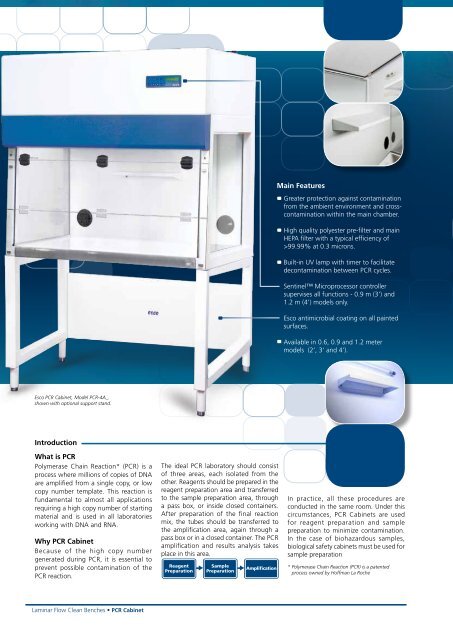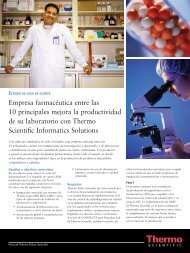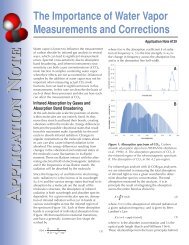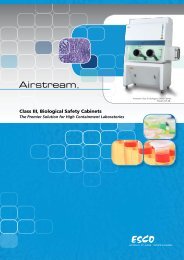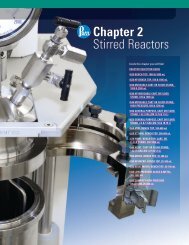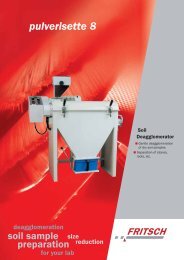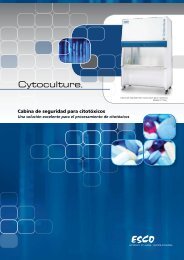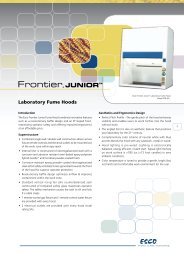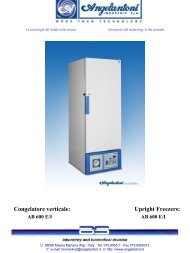Polymerase Chain Reaction Cabinets
Polymerase Chain Reaction Cabinets
Polymerase Chain Reaction Cabinets
You also want an ePaper? Increase the reach of your titles
YUMPU automatically turns print PDFs into web optimized ePapers that Google loves.
Main Features<br />
Greater protection against contamination<br />
from the ambient environment and crosscontamination<br />
within the main chamber.<br />
High quality polyester pre-filter and main<br />
HEPA filter with a typical efficiency of<br />
>99.99% at 0.3 microns.<br />
Built-in UV lamp with timer to facilitate<br />
decontamination between PCR cycles.<br />
2<br />
Sentinel Microprocessor controller<br />
supervises all functions - 0.9 m (3') and<br />
1.2 m (4') models only.<br />
Esco antimicrobial coating on all painted<br />
surfaces.<br />
Available in 0.6, 0.9 and 1.2 meter<br />
models (2’, 3' and 4').<br />
Esco PCR Cabinet, Model PCR-4A_.<br />
shown with optional support stand.<br />
Introduction<br />
What is PCR<br />
<strong>Polymerase</strong> <strong>Chain</strong> <strong>Reaction</strong>* (PCR) is a<br />
process where millions of copies of DNA<br />
are amplified from a single copy, or low<br />
copy number template. This reaction is<br />
fundamental to almost all applications<br />
requiring a high copy number of starting<br />
material and is used in all laboratories<br />
working with DNA and RNA.<br />
Why PCR Cabinet<br />
Because of the high copy number<br />
generated during PCR, it is essential to<br />
prevent possible contamination of the<br />
PCR reaction.<br />
The ideal PCR laboratory should consist<br />
of three areas, each isolated from the<br />
other. Reagents should be prepared in the<br />
reagent preparation area and transferred<br />
to the sample preparation area, through<br />
a pass box, or inside closed containers.<br />
After preparation of the final reaction<br />
mix, the tubes should be transferred to<br />
the amplification area, again through a<br />
pass box or in a closed container. The PCR<br />
amplification and results analysis takes<br />
place in this area.<br />
Reagent<br />
Preparation<br />
Sample<br />
Preparation<br />
Amplification<br />
In practice, all these procedures are<br />
conducted in the same room. Under this<br />
circumstances, PCR <strong>Cabinets</strong> are used<br />
for reagent preparation and sample<br />
preparation to minimize contamination.<br />
In the case of biohazardous samples,<br />
biological safety cabinets must be used for<br />
sample preparation<br />
* <strong>Polymerase</strong> <strong>Chain</strong> <strong>Reaction</strong> (PCR) is a patented<br />
process owned by Hoffman La Roche<br />
Laminar Flow Clean Benches • PCR Cabinet


